Oświęcim 2023-10-23
Oświęcim railway station.
Geographic coordinates: 50.041N 19.201E. Elevation 232 m.

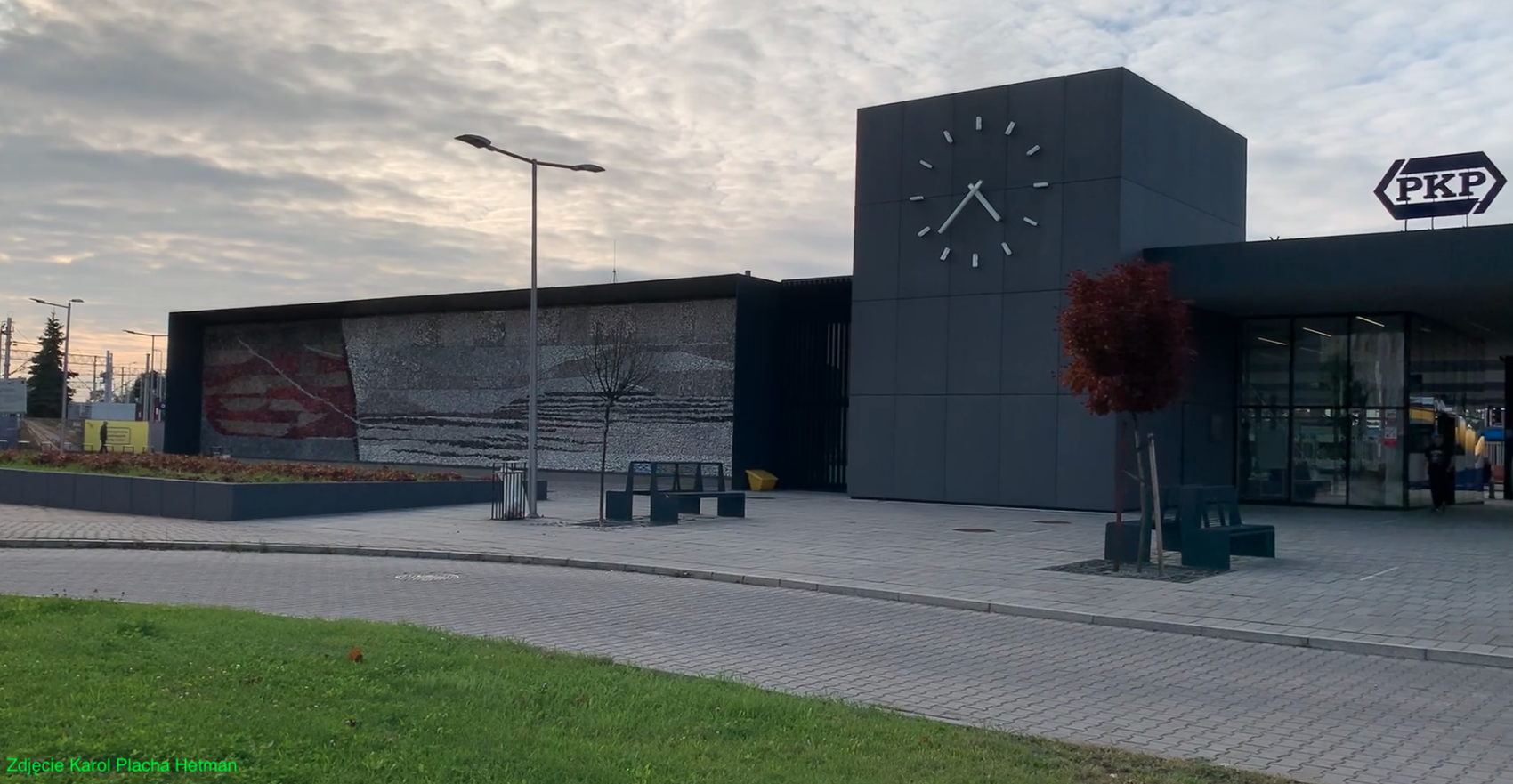
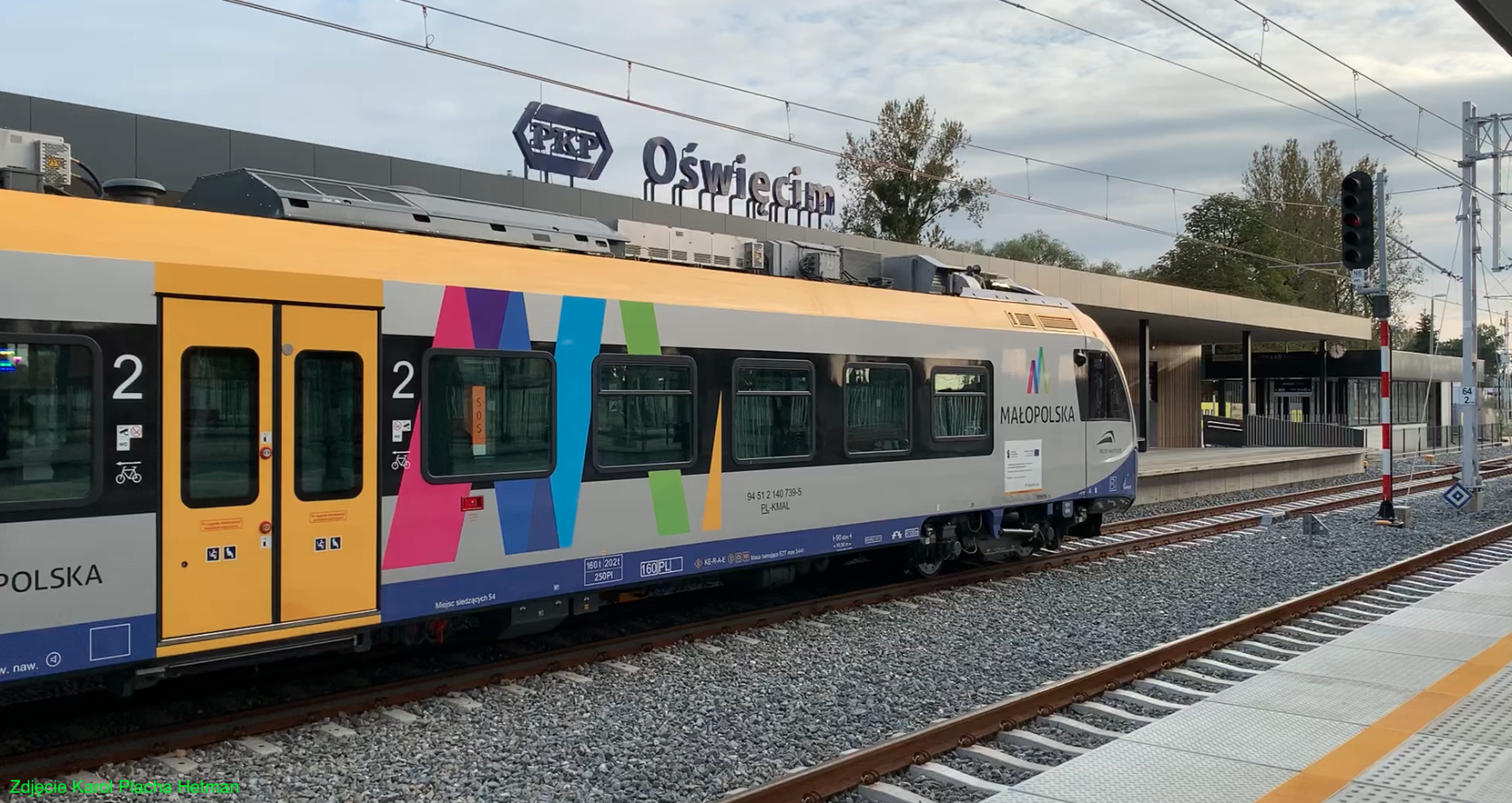
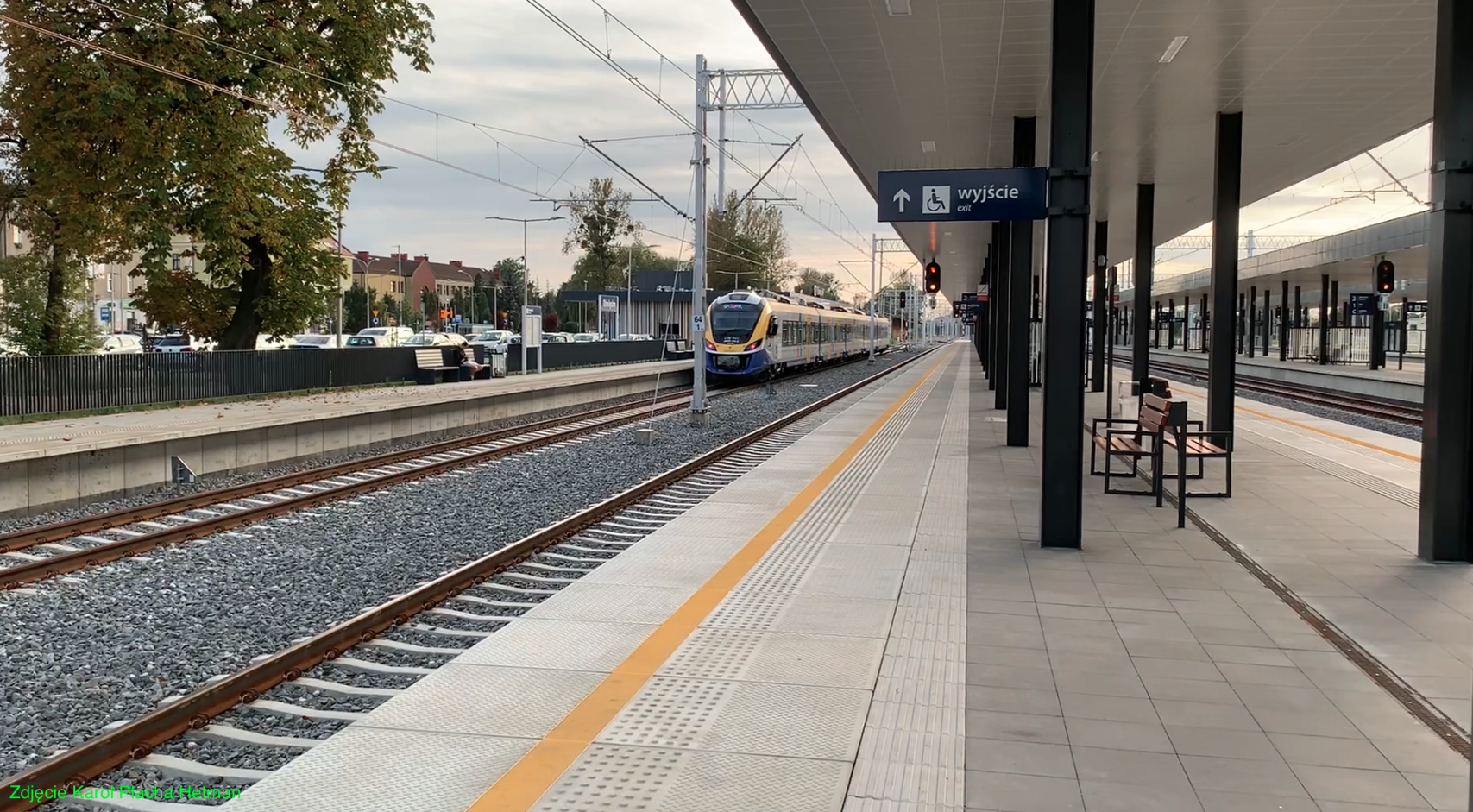
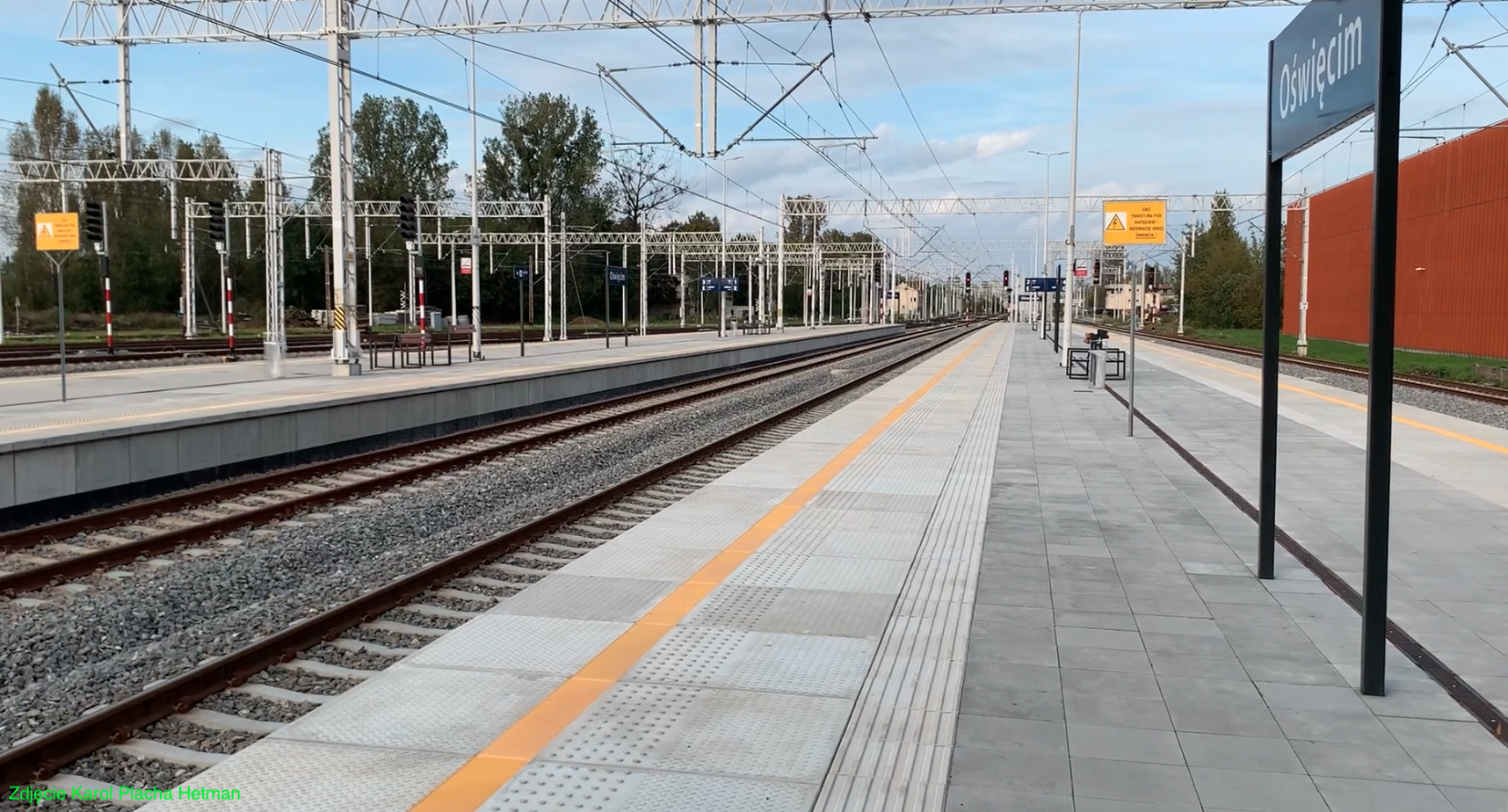
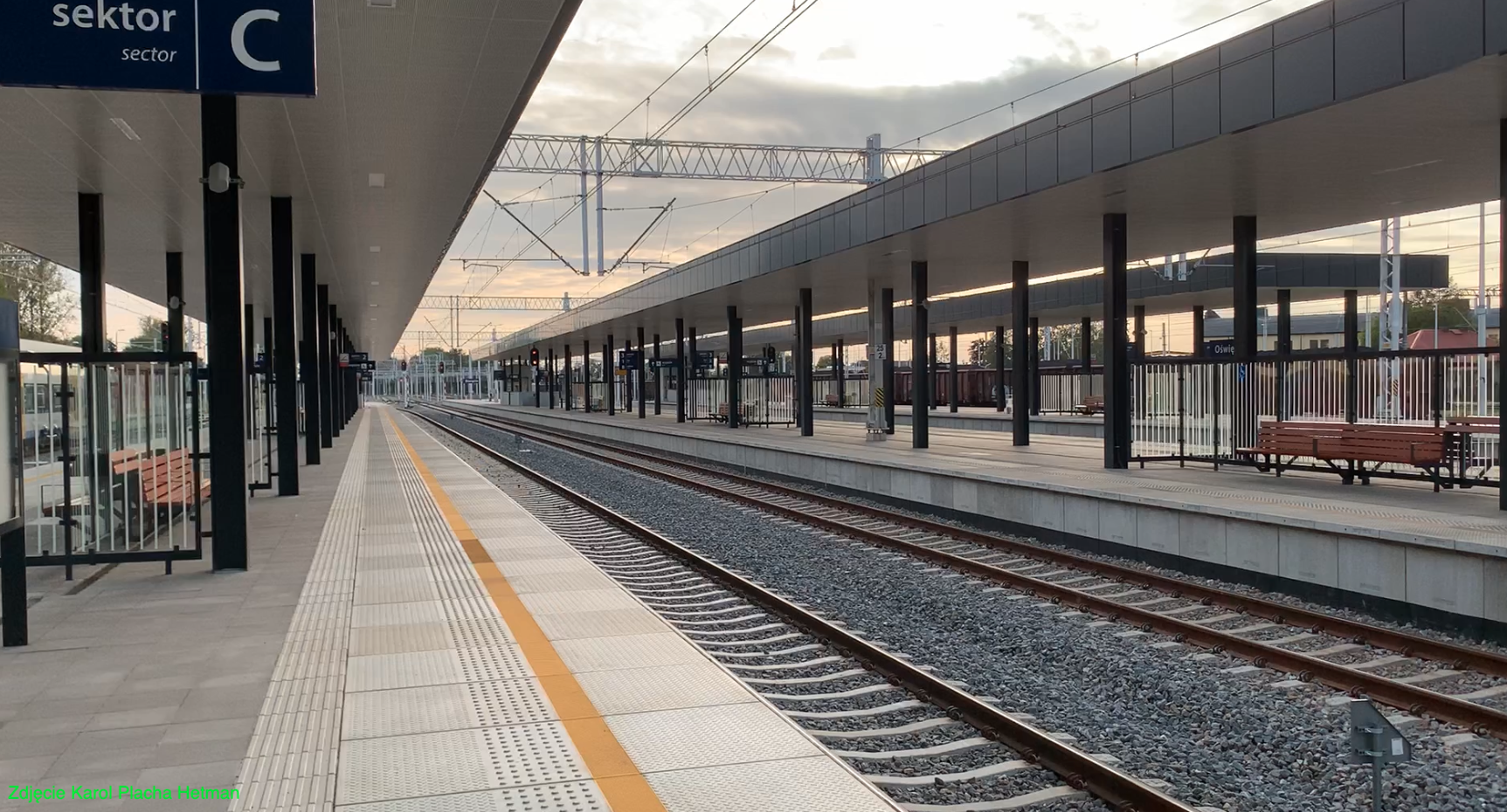
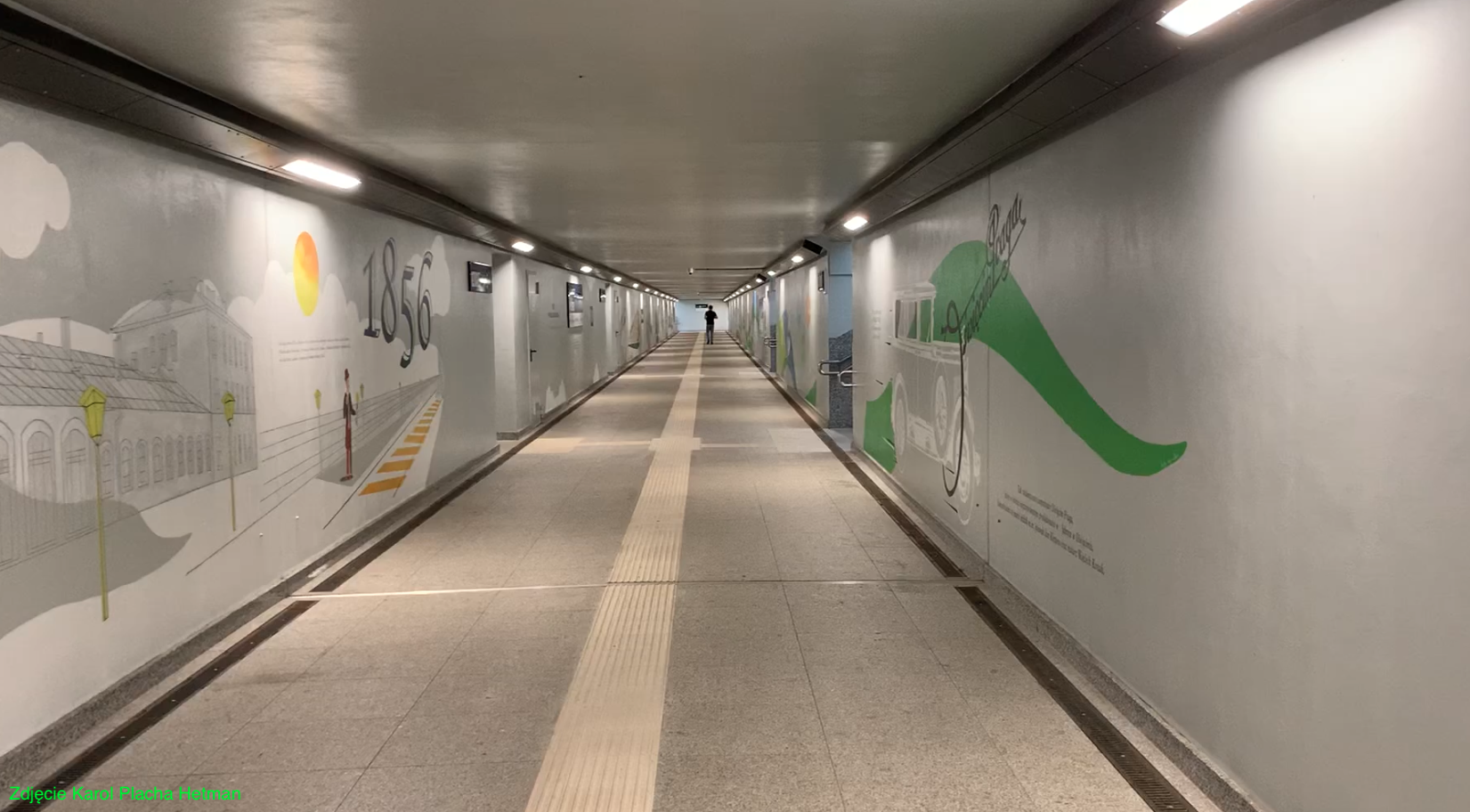
The city of Oświęcim.
The settlement was founded in the 12th century. City rights were granted in 1272 and confirmed in 1291. In the period 1315–1564, the city was the capital of the Duchy of Oświęcim-Zator. From 1564, Oświęcim was a royal city of the Crown of the Kingdom of Poland. The city historically belongs to the Krakow Land. During the partitions, the city was part of the Austro-Hungarian partition. After the Republic of Poland regained independence in 1918, the city belonged to the Krakow Voivodeship. During the German occupation (1939-1945), the city was incorporated directly into the paradise and was part of the Upper Silesian province.
In Auschwitz, the Germans established the largest concentration camp for Polish citizens. It consisted of the Auschwitz-Birkenau concentration camp and extermination center. The complex included the main camp KL Auschwitz I in Oświęcim, KL Auschwitz II - Birkenau in Brzezinka, KL Auschwitz III - Monowitz in Monowice, with a system of many sub-camps. In the 1960s, young people were taught in schools that 5 million people were murdered in the Germanic camp. In the 1990s, it was reported that there were only 1.5 million people left. Currently, approximately 1 million people have died. If this continues, the Masons will report that no one died there. What's more, Germans say it was a Polish concentration camp. That is why teaching history in schools is so important. Only 200,000 people survived until liberation.
This is not the end of the barbaric behavior of the Germans in Oświęcim. During the war, they expanded a chemical factory that belonged to the IG Farben concern and produced Zyklon B, which was used to murder and gas people. Doctors who conducted pseudomedical experiments on concentration camp prisoners cooperated with the company. Officially, the IG Farben concern was liquidated in 2012, but its know-how was taken over by other German companies.
The city of Oświęcim belongs to the Lesser Poland Voivodeship, in Oświęcim County. Geographically, Oświęcim is located on the Soła River, which flows into the Vistula River outside the city. The valley was named Oświęcim Valley after the name of the city. There are many water reservoirs in the valley; natural and artificial. There are the Macocha and Młynówka streams, several ponds and Lake Kruki. The valley lies between the Carpathian Foothills and the Silesian Upland. Currently (2021) Oświęcim has a population of 37,231 people. The city area is 30 square kilometers.
Oświęcim railway station.
The railway station in Oświęcim was opened in 1856, when Lesser Poland was under Austro-Hungarian rule. It was at the moment when railway traffic was launched on the Dziedzice - Trzebinia route.
In the period 2020-2023, the station was completely rebuilt. The modernization of the Oświęcim station was part of the investment of PKP Polskie Linie Kolejowe S.A. on the Trzebinia – Oświęcim – Czechowice Dziedzice route. The aim of the renovations is to make the railway more accessible, more comfortable and to make shorter journeys from Małopolska to Silesia. The modernized route will enable more effective use of the railway potential in domestic and international transport. PLN 800 million was allocated for the entire investment and other tasks of modernizing railway lines. The work was completed in the fourth quarter of 2023.
The track system and traction network were rebuilt and new platforms were built. The footbridge over the tracks was removed and replaced with a tunnel under the tracks and platforms. Elevators were built for passengers in wheelchairs, with large luggage or bicycles. The tunnel is 135 m long. As part of the investment, a new signal box was built, with new devices for railway traffic control and safety.
Station in Oświęcim.
Around 1856, the first station was opened. It was a one-story building covered with a low gable roof. In 1880, two wings were added to this building in the form of three-story buildings. They were covered with a low hipped roof. These wings housed service rooms and apartments. In the central part there are ticket and baggage counters, a waiting room and a restaurant.
After World War II, a new railway station was built. It was the second building of the railway station in Oświęcim, built in 1964-1965, according to the design of Mr. Karol Fojcik, known, among others, for designing the following stations: Chorzów Miasto, Zabrze and Lubliniec. In Oświęcim it was a large modernist building. In the central part there is a large, glazed, two-story hall. There were ticket offices, benches for travelers, toilets, a RUCH kiosk and ticket machines in the hall. Inside there was an impressive mosaic by Mr. Kazimierz Gąsiorowski. The two outer wings were three-story buildings. The buildings were built in the Swedish type, i.e. the interior of the building is a kind of four-sided well that is supposed to let daylight into the building.
In the period 2018-2020, a third new railway station was built. It was officially opened on June 15, 2023. The building is small, divided into two parts. The first part houses the station's security services and rooms for passengers. The glass waiting room has benches, a ticket machine for the Lesser Poland Voivodeship, a room for parents with small children, a vending machine for drinks, luggage lockers and spacious toilets. Toilets are free and publicly available. On September 10, 2023, Koleje Małopolskie launched its own ticket office. In the part intended for service premises, there is a watchmaker's workshop, a Polish Post office and a small restaurant. The new station in Oświęcim has been adapted to serve disabled people. The station is monitored and has electronic management systems. The mosaic by Mr. Kazimierz Gąsiorowski was moved to the external façade of the new station, from the side of the station square.
During the construction of the new station, a temporary station consisting of containers was opened to serve passengers. There was a ticket office, a waiting room, and toilets. There was even a watchmaker's workshop.
After the last renovation, bicycle racks were installed at the station. There is a bus stop and a TAXI rank at the station square. For motorists, there are 3 parking lots available in the immediate vicinity of the station; one larger, the second small, the third is a large Park&Ride parking lot, built on the site of the former "Glob" hotel.
Platforms.
In Oświęcim, after World War II, four low-type platforms were built. Platform 4 was located farthest from the station. The platform was intended for planned passenger trains towards the hard coal mine in Wola, KWK Czeczott. Ultimately, no train left from this platform and it served as an additional platform, for example for special and retro trains.
The platforms had a surface made of paving tiles. Warning and edge lines were painted white on the platforms. Platform 1 was single-edge, 175 m long. Platform 2 and 3 were 240 m long and 6 m wide. Platform 4 was 200 m long and 6 m wide. There were several bus stop shelters on the platforms, which only protected passengers from rain and snow. There were benches, garbage bins, street lighting and an audio system on the platforms. Access to the platforms was provided by a footbridge over the tracks. Travelers in wheelchairs, with baby strollers and large luggage, used the passage at the level of the tracks.
The footbridge over the tracks was built around 1965. It not only enabled access to the platforms, but also connected the eastern and western parts of the city. The footbridge was dismantled in 2019 and replaced with a temporary walkway at track level while the station and railway station were being renovated.
As a result of the station renovation, the platforms were completely rebuilt in the period 2020-2023. The new platforms are of the high type. Platform 1 is an island platform, 200 m long, single-edge. Platform 2 and 3 are island platforms, each 300 m long and have a roof of approximately 120 m. Platform 4 is also an island platform, 200 m long and has a roof of approximately 70 m. The platforms are approximately 8 m wide. The surface of the platforms is made made of prefabricated boards at the edge, 1 m wide. The boards have an anti-slip floor, yellow warning lines, buttons and guide paths. The rest of the platform surfaces are made of paving tiles. There is also a drainage system in the form of a linear drain. There are benches, information boards, sound systems, lighting and garbage bins on the platforms. Additionally, the benches are covered with transparent screens, protecting travelers from the wind. The platforms are connected by a tunnel for travelers and residents, because the tunnel also connects the eastern and western parts of the city. The tunnel is 135 m long.
Trains.
The real development of railways in the Oświęcim area took place after Poland regained independence in 1918. This was associated with the development of industry and the influx of people from the poorer parts of former Galicia. Some of the population headed to Mysłowice, where there was a registration point for people wanting to emigrate to the USA. The emigration route led by rail to Germanic seaports and by ship to Canada and the USA.
After World War II, there was another wave of Polish population flow. This time, repatriates expelled from former eastern Poland to the so-called recovered lands. Everything is dictated by Moscow and with the silence of the West. The repatriation point was organized in Dziedzice.
The 50s of the 20th century were the time of Poland's peaceful development, although under a communist dictatorship. The population of Poland began to go on organized holidays, to the seaside, to the mountains and to Masuria. Holidays were organized by state-owned factories for their employees. A large part of the trains were additional trains that were rented by workplaces. There were also carriages reserved for these travelers on scheduled trains. In the 1970s, from Oświęcim you could travel to: Kraków, Katowice, Wisła, Zwardoń, Cieszyn, Chałupki. The peak of passenger transport was the 1980s. For the last 90 years, PKP has been increasingly poorly financed. Railway connections were closed, passenger stops were closed and even railway stations were closed. It was only in 2012 that the railway began to be slowly modernized.
For the 2024 holiday season, the InterCity carrier plans to launch long-distance trains via Oświęcim on the Kraków - Oświęcim - Vienna and Katowice - Oświęcim - Vienna routes. The carrier SKM Małopolska also plans to launch trains on the Kraków - Skawina - Oświęcim route. In December 2023, these trains ended in Przeciszów.
Railway enthusiasts from Oświęcim point out that it would be useful to have railway stops in Kruki, near the hospital, or near the large Błonie housing estate, which would facilitate access to trains and encourage people to travel by train. Such a stop was created in Zator, next to the Energylandii amusement park.
In October 2023, 25 passenger trains departed from Oświęcim station. You could get to: Katowice, Kraków Główny, Racibórz. In 2022, the station served approximately 1,500 passengers per day.
Railway line No. 93 Trzebinia – Zebrzydowice.
Railway line No. 93 Trzebinia - Zebrzydowice is 81.408 km long, runs in the east-west direction, is a double-track line, fully electrified. The line was built in stages. On December 17, 1855, the Bohumin - Zebrzydowice - Dziedzice section was launched, and on March 1, 1856, the Dziedzice - Oświęcim section was opened. By the end of 1856, the Oświęcim - Libiąż - Trzebinia section was put into operation. From the very beginning, the rails had a gauge of 1,435 mm.
The first owner was; C.K. Emperor Ferdinand's Privileged Northern Railway. On January 1, 1906, the route was nationalized; Kaiserlich-königliche Staatsbahnen (kkStB), Imperial and Royal State Railways. In 1918, the route was divided between Poland and the Czech Republic. In Poland, the owner became PKP - Polish State Railways.
Railway line No. 93 is a line of state importance. The structure of line No. 93 allows passenger trains to reach speeds of up to 120 km/h on the Trzebinia - Dziedzice section and up to 160 km/h on the Dziedzice - state border section.
The electrification of the line took place in three stages. Electrification; on April 29, 1964, section Dziedzice - state border, on December 4, 1971, section Oświęcim - Dziedzice, on April 30, 1973, section Trzebinia - Oświęcim.
Since 2001, as a result of cuts in the Polish State Railways implemented by the Masonic governments, the number of railway connections has been systematically degraded and the tracks have not been properly repaired. As a result, the travel speed decreased and travel times increased. The railway was becoming uncompetitive with road transport.
It was only in 2015 that a feasibility study for the revitalization of railway lines was started. In 2017, the first major renovation works began. An example is the Libiąż station. On December 25, 2015, due to the poor technical condition of the rails and turnouts, the speed was limited to 30 km/h. A tender was then announced for the renovation of the station, which was won by Skanska. As a result of the works carried out, 9 km of tracks were replaced, the traction network was rebuilt and the platforms were modernized. The railway siding to the Janina coal mine was renovated. As a result of the works carried out, the speed of passenger trains increased to 100 km/h and of freight trains to 70 km/h.
On October 2, 2017, a contract was signed for the renovation of line No. 93 on the Trzebinia - Oświęcim section. In February 2018, the contractor PNiUIK Kraków entered the construction site.
On August 27, 2018, PKP PLK signed a contract with PORR for the modernization of line No. 93 on the Oświęcim - Dziedzice section, in the design and build mode. The project included the design and reconstruction of the double-track railway line No. 93 on the section from 0.700 km to 44.950 km, excluding the Libiąż station, which was modernized in another task. Stations were rebuilt; Chrzanów, Chełmek, Oświęcim, together with engineering structures and crossings, rail-road crossings, roads (with accompanying infrastructure), land reinforcement and protection, platforms and accesses, traction network, non-traction energy, and railway traffic control devices. The contract included: renovation of 63 km of tracks, 106 turnouts, 13 rail-road crossings, 45 engineering structures, 23 structures eliminating architectural barriers for disabled people. The work was completed in 2022. The total value of the project is PLN 1,005,799,936.58. But the project also included railway lines: No. 94 on the Dwory - Oświęcim section, No. 138 on the Oświęcim - Nowy Bieruń section, No. 699 on the Oświęcim OWC - Oświęcim OWC1 section, No. 882 on the Oświęcim - KWK Czeczott section. A new track was built on the Dziedzice - KWK Brzeszcze section. As a result of geological research, it turned out that in many places it was necessary to strengthen the ground. Many elements of the infrastructure had to be dismantled and rebuilt.
From 2020, passenger connections on the Kraków Główny - Trzebinia - Oświęcim route were resumed, with 9 pairs a day. The connections are handled by the PolRegio carrier. The Dziedzice - Zebrzydowice section has been operated by Koleje Śląskie since 2014.
In 2022, the Dynamic Passenger Information System was introduced on line No. 93, at the following 11 stations: Chrzanów Śródmieście, Chrzanów, Chełmek, Libiąż, Gorzów Chrzanowski, Oświęcim, Brzeszcze, Brzeszcze Jawiszowice, Jawiszowice Jaźnik, Kaniów and Dankowice. The system provides current information on the movement of passenger trains. In the event of a power failure, the UPS system will maintain operation for another 15 minutes. Passenger information audio systems operate in the control rooms of individual stations and at LCS Dziedzice.
Railway line No. 94 Kraków Płaszów – Oświęcim.
Railway line No. 94 Kraków Płaszów - Oświęcim is a line running from east to west. The line is 64.502 km long, is a double-track line and is electrified with 3 kV DC. The line was launched in 1884. Electrification was carried out in two stages; on October 30, 1970, on the Kraków Płaszów - Spytkowice section and on September 9, 1971, on the Spytkowice - Oświęcim section. The route is of national importance, mainly for freight traffic between Silesia and Krakow. Since 2000, passenger traffic on the line has been decreasing, especially on the Skawina - Oświęcim section. The section Kraków Płaszów - Skawina was important because it continued with line No. 97 towards Zakopane. The last passenger train covering the entire line No. 94 in 2014 was the international Interregio train from Krakow to Ostrava in the Czech Republic; Kraków - Skawina - Oświęcim - Czechowice Dziedzice - Zebrzydowice - Ostrava. In 2015, train services on the Kraków - Skawina - Oświęcim route were restored. However, after a year, due to the poor condition of the tracks and the long travel time, it was suspended again. At the end of 2022, after renovations, passenger traffic was restored.
In 2017, a long-distance InterCity train ran on the route: Warsaw - Kraków - Skawina - Oświęcim - Dziedzice - Vienna. There was also a train from Przemyśl - Kraków - Trzebinia - Oświęcim - Prague. Connections have been suspended due to the renovation of line No. 93 from Trzebinia to Czechowice Dziedzice and the renovation of the Dziedzice junction. The renovations are scheduled to be completed by the end of 2023.
Railway line No. 138 Oświęcim – Katowice.
Railway line No. 138 Oświęcim - Katowice is 32,761 km long, double-tracked and electrified. The line runs from south to north. The line runs through the Lesser Poland and Silesian Voivodeships. The maximum speed is 110 km/h.
Railway line No. 882 Oświęcim – KWK Czeczott.
Railway line No. 882 Oświęcim - KWK Czeczott is a freight line with a length of 9,551 km. The line enabled the Czeczott Hard Coal Mine to be operated by freight trains running directly through the Oświęcim station towards Trzebinia, Skawina and Mysłowice. The Czeczott mine also has a second route towards the town of Bieruń. There are also coal mines Piast and Ziemowit nearby. The maximum speed is 40 km/h (freight trains).
Written by Karol Placha Hetman
